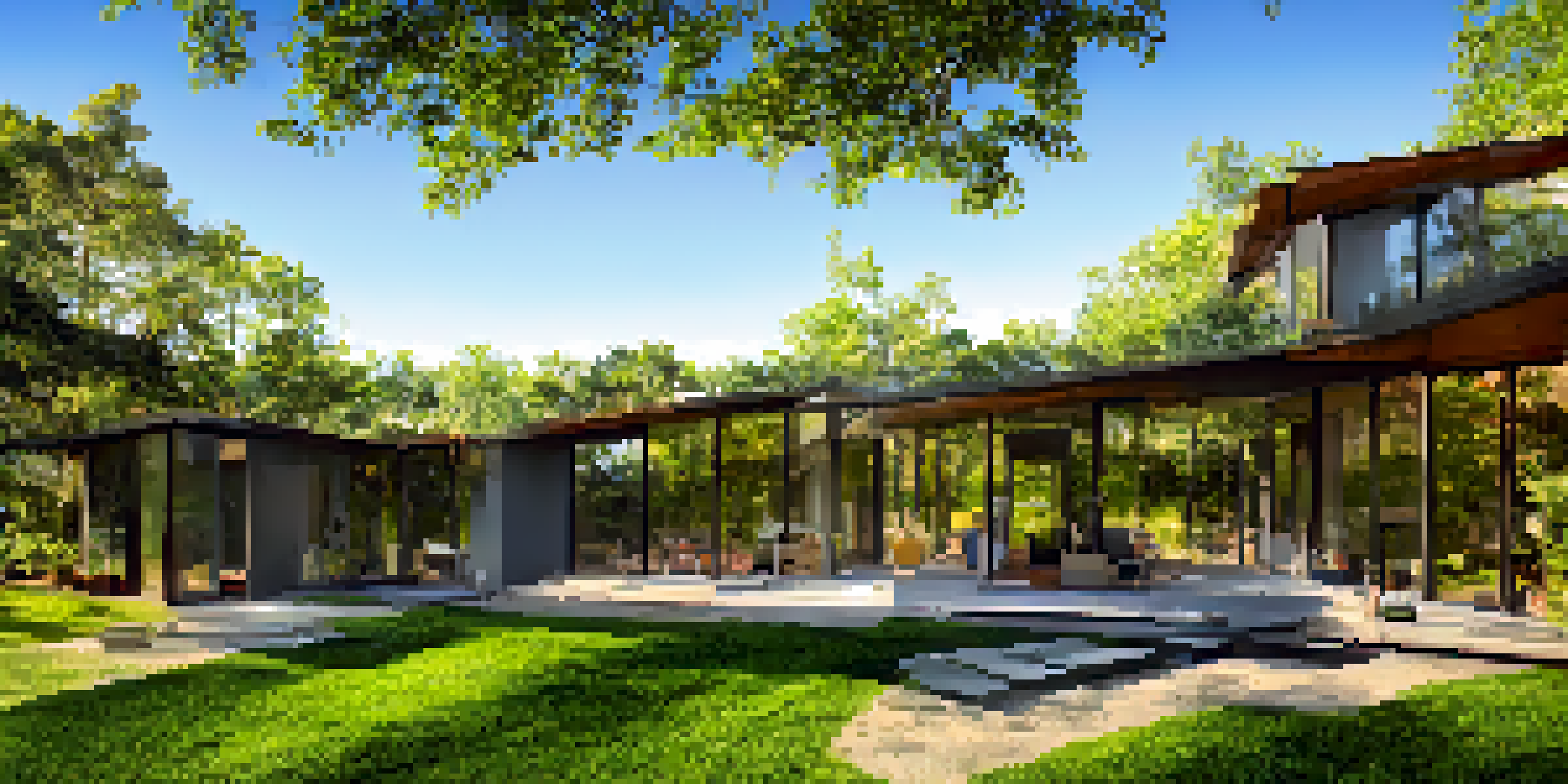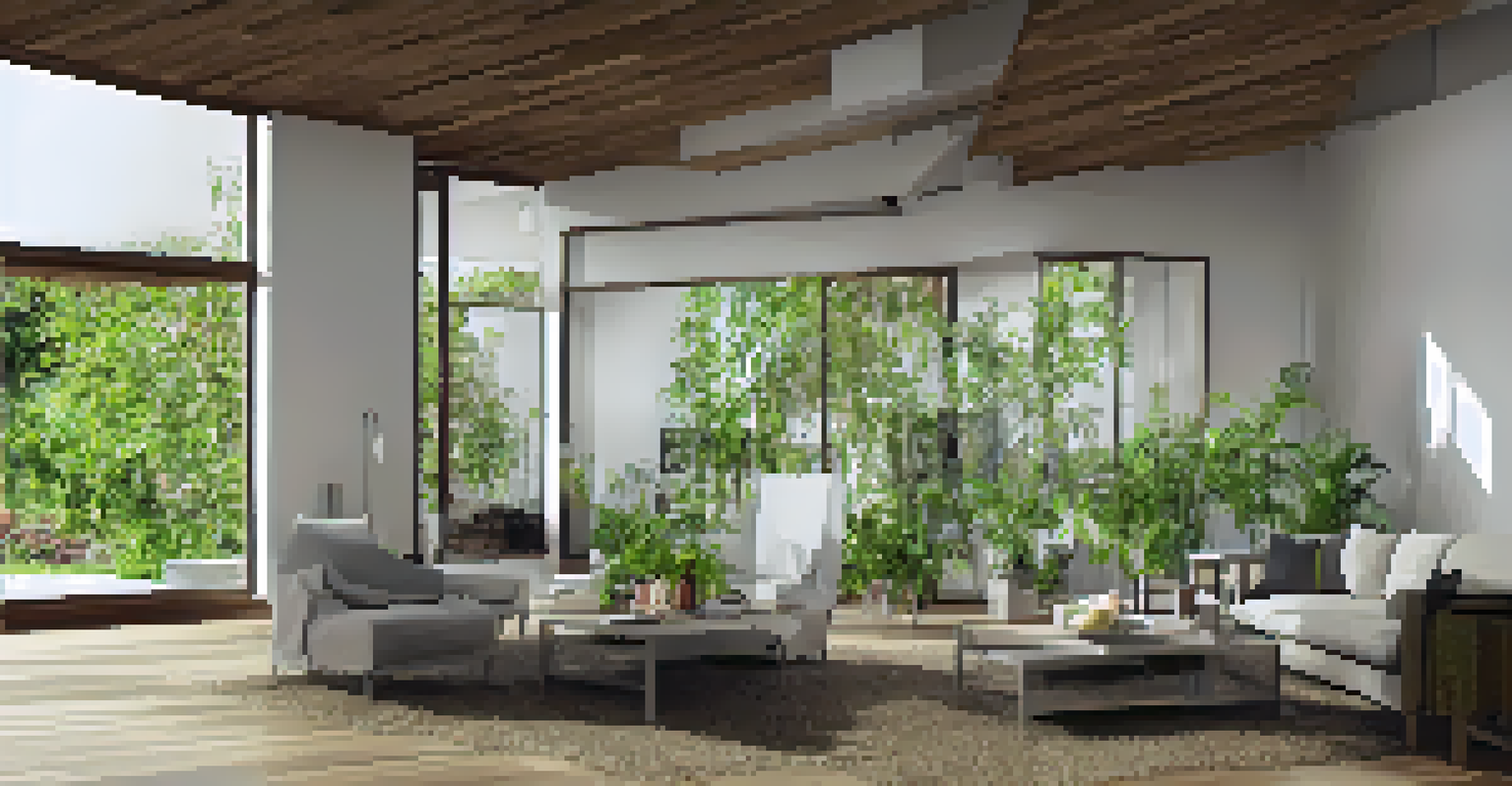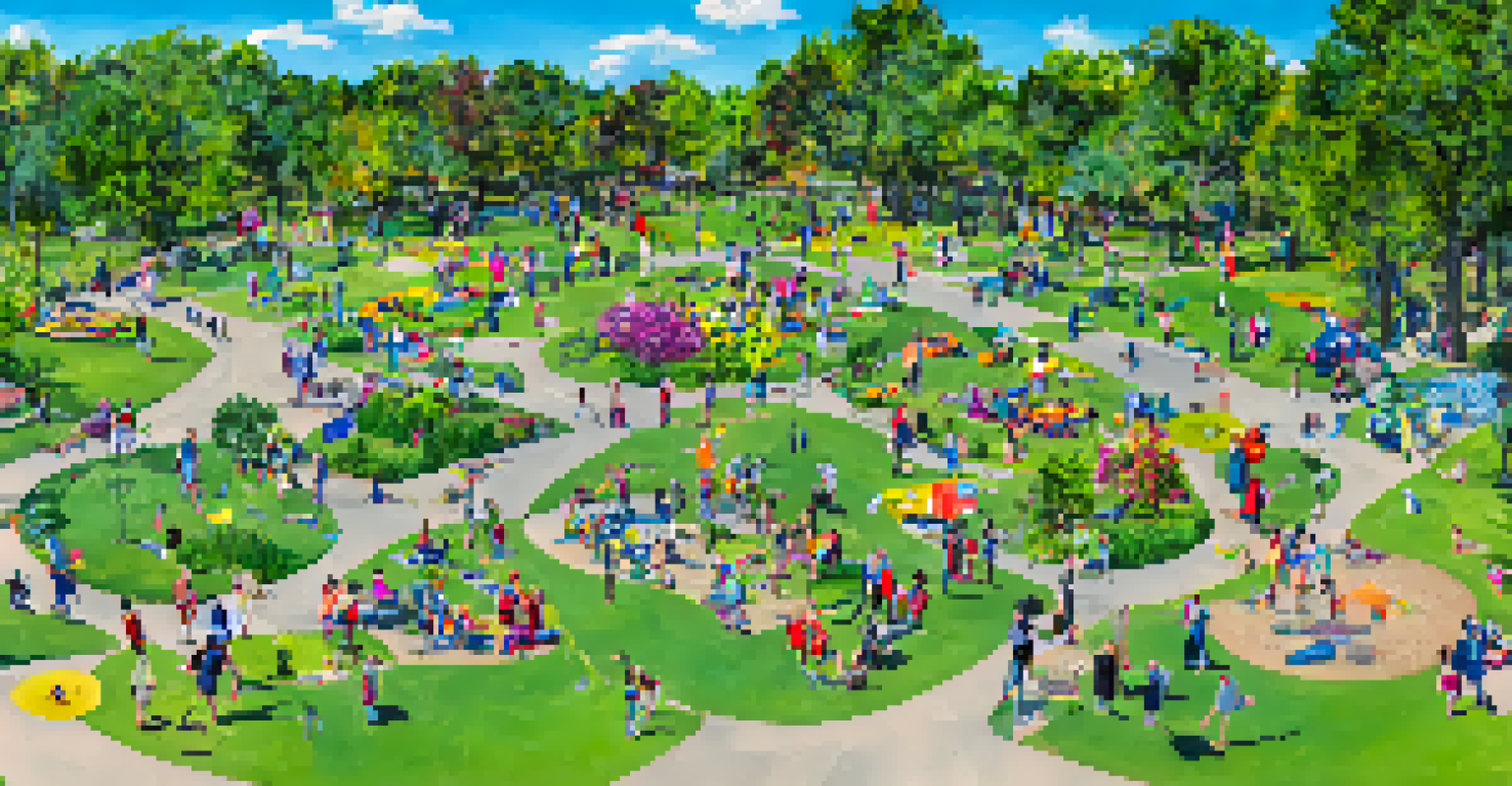Current Trends in Sustainable Housing: What Buyers Want Now

Growing Demand for Energy-Efficient Homes
In today’s housing market, energy efficiency is at the forefront of buyers' minds. Many homeowners are looking for features like solar panels and high-quality insulation to reduce utility costs and environmental impact. This shift not only aligns with personal values toward sustainability but also offers long-term savings, making it a win-win situation.
The future will be green, or not at all.
As energy prices continue to fluctuate, the appeal of energy-efficient homes grows. Buyers are increasingly recognizing the importance of lower energy consumption, which translates to smaller carbon footprints. For instance, homes equipped with Energy Star-rated appliances often sell faster and at premium prices, reflecting this trend.
Moreover, government incentives for energy-efficient upgrades further bolster buyer interest. Programs that offer tax credits or rebates for green renovations encourage more homeowners to invest in sustainable features. This trend isn't just a passing phase; it signifies a fundamental shift in how we view energy use in housing.
Sustainable Materials Are in High Demand
Sustainable building materials are becoming a critical factor in home buying decisions. Buyers are increasingly drawn to homes that incorporate materials like reclaimed wood, bamboo flooring, or recycled steel, which not only reduce waste but also add unique character to a property. This shift reflects a broader awareness of the environmental impact of construction materials.

For example, bamboo is not only a renewable resource but also known for its durability, making it an ideal choice for flooring. Homeowners appreciate the aesthetic appeal and the eco-friendly story behind such materials. By choosing sustainable options, buyers feel they’re making a positive impact on the planet.
Energy-Efficient Homes Are in Demand
Homebuyers are increasingly prioritizing energy-efficient features like solar panels and high-quality insulation to lower costs and minimize environmental impact.
Additionally, the trend toward sustainable materials is supported by a growing number of manufacturers who prioritize eco-friendly production processes. This makes it easier for buyers to find attractive, sustainable options that fit their budgets and style preferences, enhancing the overall appeal of green homes.
Smart Home Technology Enhances Sustainability
Integrating smart home technology is another trend shaping sustainable housing today. Buyers are seeking homes equipped with smart devices that help monitor and reduce energy usage, such as programmable thermostats and smart lighting. These technologies not only contribute to sustainability but also enhance convenience and comfort for homeowners.
Sustainability is no longer about doing less harm. It's about doing more good.
For instance, a smart thermostat can learn a homeowner's schedule and adjust heating and cooling accordingly, leading to significant energy savings. This tech-savvy approach appeals to a younger generation of homebuyers who prioritize innovation alongside sustainability. Buyers see smart homes as a way to embrace both modern living and environmental responsibility.
Moreover, the future of smart home technology promises even more sophisticated options, such as artificial intelligence that can predict energy use patterns. This ongoing evolution ensures that smart homes will remain a key consideration for buyers looking to invest in sustainable housing.
The Appeal of Eco-Friendly Neighborhoods
Location is a crucial aspect of home buying, and eco-friendly neighborhoods are gaining popularity. Buyers are increasingly gravitating toward communities that prioritize green spaces, walkability, and proximity to public transport. These neighborhoods not only reduce the need for cars but also foster a sense of community and connection to nature.
For example, developments that feature parks, bike paths, and community gardens attract buyers who value outdoor living and sustainability. Living in a green neighborhood allows homeowners to enjoy healthier lifestyles while also contributing to environmental conservation. This trend highlights a desire for a more holistic approach to living sustainably.
Sustainable Materials Matter
There’s a growing preference for homes built with sustainable materials such as reclaimed wood and bamboo, reflecting buyers' commitment to eco-friendly living.
Furthermore, municipalities are recognizing the demand for such developments and are beginning to incorporate sustainable urban planning principles. This shift in policy not only supports eco-friendly neighborhoods but also enhances property values, making them even more appealing to prospective buyers.
Buyers Prioritize Indoor Air Quality
As awareness of health and wellness grows, buyers are placing a premium on indoor air quality in their homes. Many are looking for properties with features like advanced ventilation systems, non-toxic building materials, and ample natural light. This trend is driven by a desire to create a healthier living environment, especially in light of recent public health concerns.
For instance, homes equipped with HEPA filters can significantly reduce allergens and pollutants, making them more attractive to families and individuals with respiratory issues. The focus on air quality highlights how sustainability goes beyond energy savings; it encompasses the overall well-being of the occupants.
Moreover, builders and designers are responding to this demand by incorporating health-focused features into new developments. As a result, homes that promote better indoor environments are becoming hot commodities in the housing market.
Water Conservation Features Are Essential
In a world where water scarcity is a pressing issue, water conservation features are becoming a must-have for new homebuyers. Many are seeking homes with rainwater harvesting systems, drought-resistant landscaping, and low-flow fixtures. This trend reflects a growing awareness of the importance of conserving our most precious resource.
For example, rainwater harvesting systems allow homeowners to collect and reuse water for irrigation, reducing reliance on municipal sources. These features not only help the environment but also lead to lower water bills, making them increasingly attractive to budget-conscious buyers. The practical benefits complement the overarching goal of sustainability.
Community Engagement Boosts Sustainability
Homebuyers value neighborhoods with active community engagement in sustainability efforts, fostering a sense of belonging and shared environmental responsibility.
Additionally, as climate change continues to affect water availability, the demand for homes with water-efficient systems is likely to rise. Builders are recognizing this trend and are incorporating innovative solutions to attract environmentally conscious buyers.
Affordable Green Housing Is Gaining Traction
The conversation around sustainable housing is evolving to include affordability, as more buyers seek green homes within their financial reach. With rising housing costs, the challenge lies in making eco-friendly options accessible to a broader audience. This trend emphasizes that sustainability should not be a luxury but a standard for all.
Developers are responding by creating affordable green housing projects that utilize cost-effective materials and energy-efficient designs. For example, modular homes are gaining popularity for their affordability and potential for sustainable construction. This approach allows buyers to invest in homes that align with their values without breaking the bank.

As a result, initiatives promoting affordable sustainable housing are gaining momentum across various regions. This trend signifies a shift toward inclusivity in the green housing market, encouraging more people to embrace sustainable living.
Community Engagement in Sustainable Living
Finally, buyers are increasingly valuing community engagement as part of their sustainable housing journey. Many are looking for neighborhoods with active residents' associations focused on sustainability initiatives, such as community gardens and local recycling programs. This reflects a growing desire for connection and collaboration in the pursuit of greener living.
For instance, communities that organize clean-up days or educational workshops on sustainability foster a sense of belonging and shared purpose. Homebuyers appreciate being part of a collective effort to improve both their immediate environment and the larger community. This trend highlights how sustainability extends beyond individual homes to encompass entire neighborhoods.
Moreover, as more buyers prioritize this aspect, developers are encouraged to create community-oriented projects that promote sustainable living. The focus on community engagement in sustainability signifies a collective commitment to making a positive impact on the world.